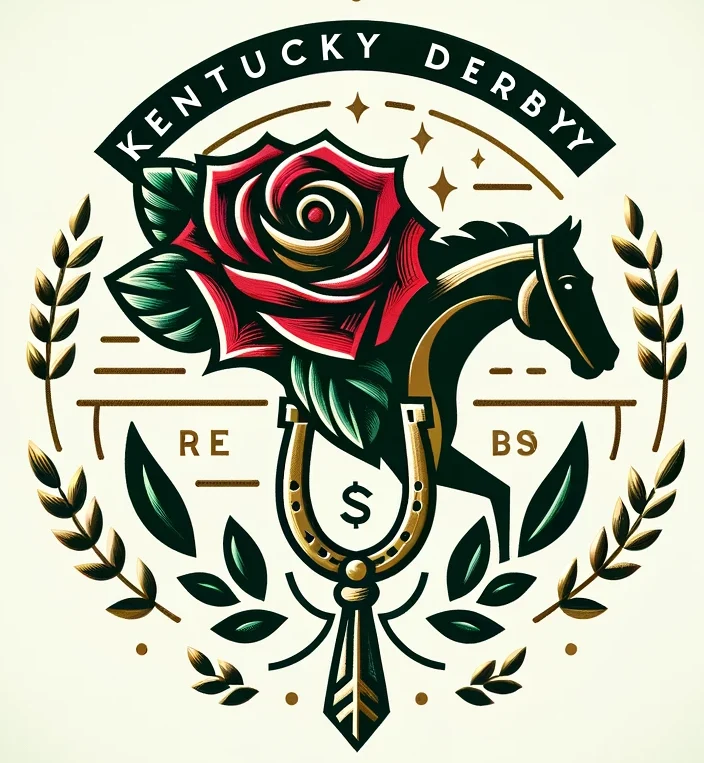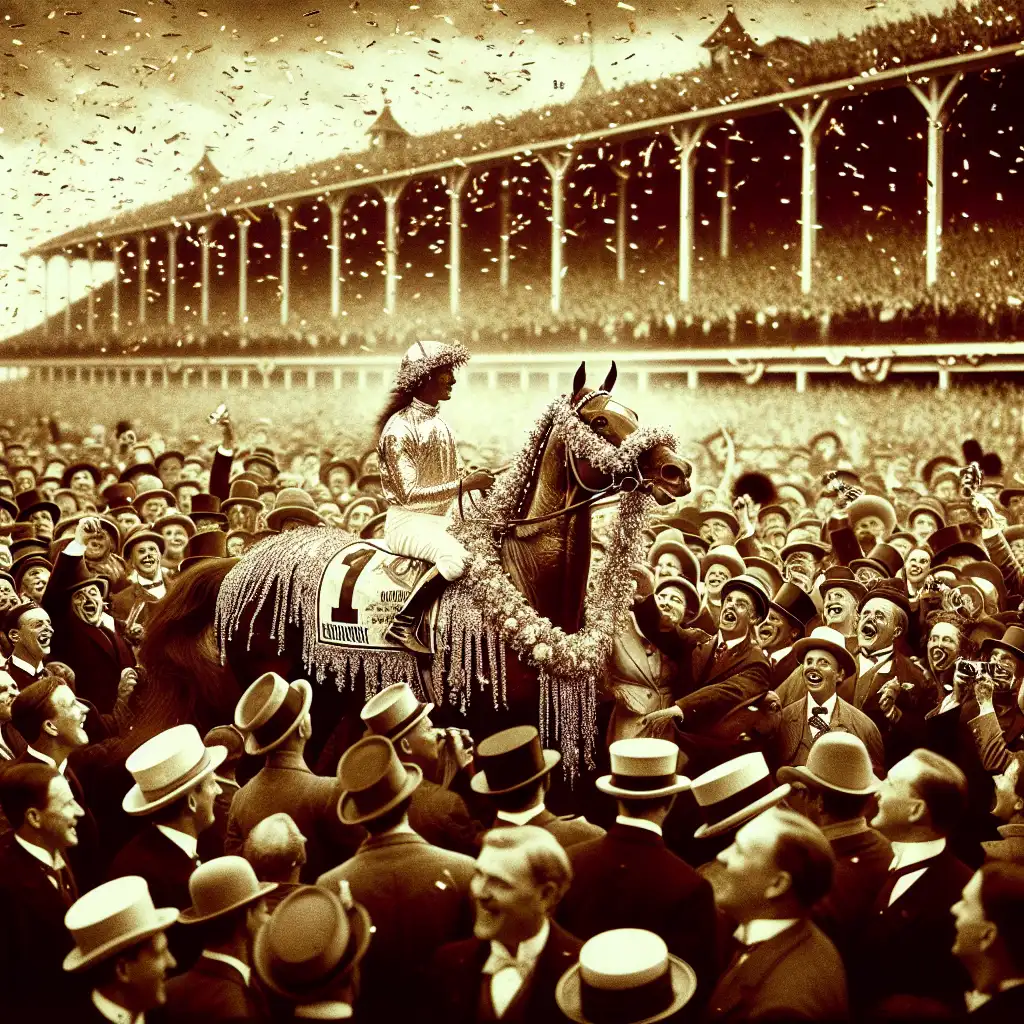Samuel S. Brown Owner: One Kentucky Derby Winner
Samuel S. Brown: Early Life and Inherited Business
Samuel S. Brown was born in Pittsburgh, Pennsylvania on December 15, 1842. He spent his early years focusing on academics at Washington & Jefferson College. However, when the Civil War erupted during his sophomore year at age 19-20, he felt compelled to join the Union Army.
Following in his father’s footsteps into the coal mining industry after completing college, Brown inherited their family business and took it to new heights through expansion and innovation. By seizing growth opportunities and showcasing sharp business skills, he turned this inheritance into a vast empire that included six successful coal mines and strategically located hotels across various American cities.
Brown didn’t stop at coal mining; he diversified his portfolio with smart investments such as acquiring a controlling interest in a railroad dedicated to efficient coal transportation. His entrepreneurial drive led him into different sectors, establishing himself as a key player in America’s industrial scene during that period. Under Brown’s leadership, the company expanded not only within traditional industries but also ventured into forward-thinking projects that positioned him as an influential force shaping economic landscapes well beyond mineral extraction alone.
Samuel S. Brown embodied the quintessential self-made individual whose vision surpassed conventional definitions of success. From serving on battlefields during war times to steering large commercial enterprises towards prosperity post-war – all while still young – Brown blazed a remarkable trail through sheer determination and foresight. His journey from college student to corporate leader symbolizes resilience against challenges by facing them head-on with unwavering resolve—an inspiration for how one person can impact numerous aspects of society long after they have passed away.
Samuel S. Brown: Thoroughbred Racing Ventures
Samuel S. Brown had a huge impact on the world of Thoroughbred racing that went beyond just owning horses; it was a lasting legacy filled with passion and dedication. At Senorita Stock Farm, close to the famous grounds in Lexington, Kentucky, he nurtured champions who became part of horse racing history. Buchanan, winner of the 1884 Kentucky Derby, raced proudly under his name. Broomstick is another example of Brown’s keen eye for spotting talented horses – this Hall of Fame inductee left an unforgettable mark on the sport.
But Samuel S. Brown didn’t stop at breeding exceptional racehorses; he also made smart investments in racetracks that shaped American horse racing as we know it today. The sound of hooves thundered across tracks like the historic Kentucky Association course in Lexington where speed and spectacle combined amidst tradition and prestige. Bascombe Race Course down south in Mobile, Alabama showed Brown’s ability to see potential where others saw only empty fields – turning dreams into reality under sunny southern skies.
In every step taken by horses raised under his care or every dollar invested wisely into up-and-coming racetracks lies Samuel S. Brown’s unwavering commitment to elevating Thoroughbred racing with success and innovation.
As we now stand among modern grandstands echoing with cheers from past races and those yet to come, let us remember those who built its foundation brick by brick – including Samuel S. Brown who remains a shining light atop horse racing’s greats.
The sound of hoofbeats may fade over time but remember: legends never truly retire; they simply pass their wisdom onto future generations eager to write new chapters while honoring those before them – such is the story penned by Samuel S. Brown on history’s illustrious pages.
The Pros & Cons of Racing Legacy
Pros
-
Building a strong reputation and track record in the racing industry
-
Opening up more chances to network and collaborate with others in the racing community
-
Passing down family traditions and values through the years
-
Gaining increased recognition and admiration within the horse racing world
-
Motivating upcoming generations of racers and fans
Cons
-
Feeling the weight of meeting family expectations and living up to their achievements
-
The fear of being outshined by the family legacy instead of celebrating personal accomplishments
-
Juggling strained personal relationships in a competitive industry
-
Struggling to carve out an identity that is distinct from the well-known family name
-
Facing challenges in making independent decisions because of the strong existing reputation within the family
Notable Horses Owned by Samuel S. Brown
Samuel S. Brown made history as a successful Thoroughbred owner when his horse Buchanan won the 1884 Kentucky Derby. This victory was a major achievement for Brown and boosted his reputation in the horse racing world.
Another standout horse under Brown’s ownership was Lamplighter, who was sold for an impressive $30,000 due to his strong performance on the racetrack. This high selling price highlighted Lamplighter’s talent and showcased Brown’s ability to pick top-quality horses that could win races and bring in big profits.
Troubadour also added to Samuel S. Brown’s legacy by being named an American Champion Older Male Horse after-the-fact. Troubadour’s success on the track showed how dedicated Brown was to developing talent and promoting excellence within his stables—a true testament to his lasting influence on Thoroughbred racing history.
Transition of Ownership Post-samuel S. Brown’s Passing
After the death of Captain Samuel Smith Brown on December 11, 1905, his brother W. Harry Brown took over the horse breeding business until November 23, 1908 when he sold off the bloodstock at a Fasig-Tipton auction. The land where Senorita Stock Farm once stood is now home to Kentucky Horse Park.
The period following Samuel S. Brown’s passing was a pivotal moment in Thoroughbred racing history. W. Harry Brown had to step up and continue his brother’s work without Samuel’s guidance.
Samuel S. Brown didn’t just own horses; he also played a key role in developing racetracks and establishing them as important centers for entertainment that we still enjoy today.
To honor him properly, it’s essential not only to acknowledge his achievements but also how they laid the foundation for future generations to keep pushing boundaries in this prestigious sport.
As time moves forward and memories become distant reminders of days gone by, let us always remember trailblazers like Samuel S. Brown whose love for horse racing sparked a flame that still shines brightly at every race track nationwide.”
Key Facts about Samuel S. Brown
| Attribute | Information |
|---|---|
| Full Name | Samuel S. Brown |
| Born | Samuel Smith Brown (1842-12-15) December 15, 1842, Pittsburgh, Pennsylvania, United States |
| Died | December 11, 1905 (aged 62), Pittsburgh, Pennsylvania, United States |
| Resting Place | Allegheny Cemetery, Pittsburgh, Pennsylvania |
| Occupation(s) | Coal magnate, Racehorse owner/breeder |
| Board Member of | National Bank of Commerce (Pittsburgh, Pa.), First Nation Bank (Dawson, Pa.), Ohio Railway Company |
| Spouse | Lizzie P. Pollock |
| Children | Frank Brown |
| Parent(s) | William Hughey Brown & Mary Smith |
| Relatives | W. Harry Brown (brother) |
Legacy of Samuel S. Brown in Horse Racing
Samuel S. Brown made a lasting impact on horse racing history that still resonates today, like a classic song you can’t get out of your head. He was not just another owner; he had sharp business skills and an unending love for Thoroughbreds that created a legacy as strong as an oak tree in a fierce storm. By owning some of the most famous Kentucky Derby champions, he didn’t just boost his own reputation but also brought unforgettable moments to the sport that shimmered with success.
The thundering hooves of Buchanan and Broomstick were more than just winning races; they showed everyone Brown’s dedication to breeding top-notch horses and striving for excellence in the industry. Every time his horses crossed the finish line first, it wasn’t only about winning – it was also about how proud he felt knowing he had helped shape their destinies.
But Brown’s contributions went beyond simply winning prestigious races – he invested deeply in racetracks where dreams ran free under sunny skies. His vision extended further than individual victories on the track; it aimed at creating a space where both experienced fans and newcomers could enjoy watching these magnificent creatures race across lush fields together. In every corner draped with colorful silks, Samuel S. Brown’s spirit danced around like sunlight filtering through green leaves.
As time moves forward, Samuel S. Brown remains enshrined in horse racing legends – almost like a guardian angel overlooking each new race run or foal born into this thrilling world of speed and beauty. His legacy isn’t something carved in stone but alive within every neigh heard during twilight races across grassy fields — forever remembered as someone whose passion for these majestic animals knew no bounds or limits set by time itself.
FAQ
1. What were the key accomplishments of Samuel S. Brown in the world of Thoroughbred racing?
Samuel S. Brown left a lasting mark on the world of Thoroughbred racing by owning several Kentucky Derby champions and investing heavily in racetracks. His achievements have solidified his legacy in the sport.
2. How many Kentucky Derby champions did Samuel S. Brown own during his career?
During his successful time in the horse racing world, Samuel S. Brown had two horses that won the Kentucky Derby.
3. Can you elaborate on Samuel S. Brown's investments in racetracks and their impact on the sport?
Samuel S. Brown became a key player in Thoroughbred racing by investing in racetracks like the famous Churchill Downs and Latonia Race Track. His contributions not only established his reputation as a leading figure in the sport but also influenced its future direction for years to come.
4. What legacy did Samuel S. Brown leave behind in the realm of horse racing?
Samuel S. Brown made a significant impact in the world of horse racing as a successful owner of Kentucky Derby winners and an innovative investor in racetracks, establishing himself as a respected figure in the sport's past.
5. How did Samuel S. Brown's ownership style differ from other prominent figures in Thoroughbred racing history?
Samuel S. Brown was known for his dedication to excellence, always making strategic investments in top-tier racehorses and racetracks that set him apart from other well-known figures in Thoroughbred racing history.
6. What were some of the defining characteristics of the horses owned by Samuel S. Brown that contributed to his success as a champion owner?
Samuel S. Brown's horses were famous for their incredible speed, endurance, and drive, which played a crucial role in helping him become a top owner in Thoroughbred racing.


